“To acquire knowledge, one must study; but to acquire wisdom, one must observe.” – Marilyn vos Savant
You know those ceramic dishes your mom uses to serve Sunday dinner? What if I told you that Industrial Vibration played a part in making those dishes possible?
The Ceramics Industry covers a wide range of products from traditional ceramics, such as pottery and chinaware, to technical ceramics for chemical, mechanical or thermal applications. I will provide you with a brief overview of the manufacturing process of traditional ceramics. I will help you see where Industrial Vibration fits into the processes as well, so brace yourself; here we go!
What exactly is Ceramics?
Ceramics can be defined as a class of inorganic, nonmetallic solids that are subjected to high temperatures for manufacturing use. I spoke about the term “traditional ceramics” which will be the focus of this post. These are ceramic products that are produced from unrefined clay, and combinations of refined clay and powdered or granulated non-plastic minerals. This includes pottery, stoneware, chinaware, porcelain, etc. To create these end products, the ceramic matter needs to go through the traditional manufacturing process, which goes as follows:
Step #1: Milling & Raw Material Procurement
The raw materials used in the process are milled materials. They are often found in mining sites that have been reduced from a large size to smaller sizes or, in some cases, pulverized depending upon the end product. The idea is to liberate any impurities in the materials allowing for better mixing and forming, which produces a more reactive material when firing.
Step #2: Sizing
Remember I told you industrial vibration would come into play? Here it is!
During this step, the materials that have undergone the milling and procurement process must be sized to separate desirable material from non-usable material. By controlling the particle size, the result will give you proper bonding and a smooth surface on the finished product.
This can be accomplished using Fine Mesh Vibratory Sifting Equipment from our affiliate HK Technologies, such as the HKC Single Drive Sifter Series, when dealing with dry, fine powder mixes in ceramics. Multiple mesh sizes are available. Screen deck sizes vary depending on slurry thickness and the percentage of the solids present in the mix. To read more about how fine mesh screening can optimize your ceramics process, click here.
We have also provided Ceramics producers with larger-scale screeners, such as our model EMS Electromechanical Screener which you can see in action in the video below. This piece of equipment has a higher load capacity and works well when the slurry contains larger pieces of materials.
We had a customer who contacted us to create a vibratory solution for their ceramics processing. The company produced insulating fire bricks that are used for industrial applications. They wanted to remove the rejects or oversized regrind brick after the bricks had undergone the crushing process. Using our Vibratory Screener, they can consolidate useful materials and repurposed them for the next batch.
Step #3: Batching
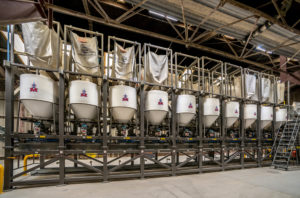
This process can also be known as “blending” which calculates amounts, weighing, and initial blending of the raw materials. For consistent material flow into a pub mill hopper, vibratory feeders can be applied in the process. If you have a light load capacity and a dusty hazardous environment, CF-A Air Powered Feeders are a great option. However, it is not as standard as the EMF Electromechanical Feeder, which can provide a multitude of forces and frequencies. Though EMF Models are not typically able to be used in dusty, hazardous environments, they can be fitted with explosion-proof Rotary Electric Vibrators to handle a larger load capacity.
Step #4: Mixing
To obtain a more chemically and physically homogeneous material prior to forming, the constituents of the ceramic powder are combined using the method of mixing or blunging. Most often, pug mills are the preferred piece of machinery used when dealing with dry mixes. It is also important to add binders or plasticizers as well. For wet slurry mixtures, a filter press would remove the water from the slurry and yield the clay body from the mix. For these wet mixtures, deflocculants and antifoaming agents are added to improve the processing of the materials.
Step #5: Forming
For this step, materials such as dry powders, pastes, or slurries are consolidated and molded to produce a cohesive body for the desired product. In the particular case of dry forming, vibratory compaction can be used to achieve the desired shape. For molds of a smaller scale with a lighter load, Vibratory Jogger Tables may be desired. In cases when the mold is large, FA Flat Deck Vibratory Tables can be used. Providing the weight of the mold/materials and scale of the mold will help make choosing a proper compaction table easier.
Step #6: Drying
The formed materials hold water and binder in their mix that can cause shrinkage, warping, or distortion of the product. Generally, convection drying is the most commonly used method in which heated air is circulated around the ceramic piece that alleviates the risk of such imperfections in the final product.
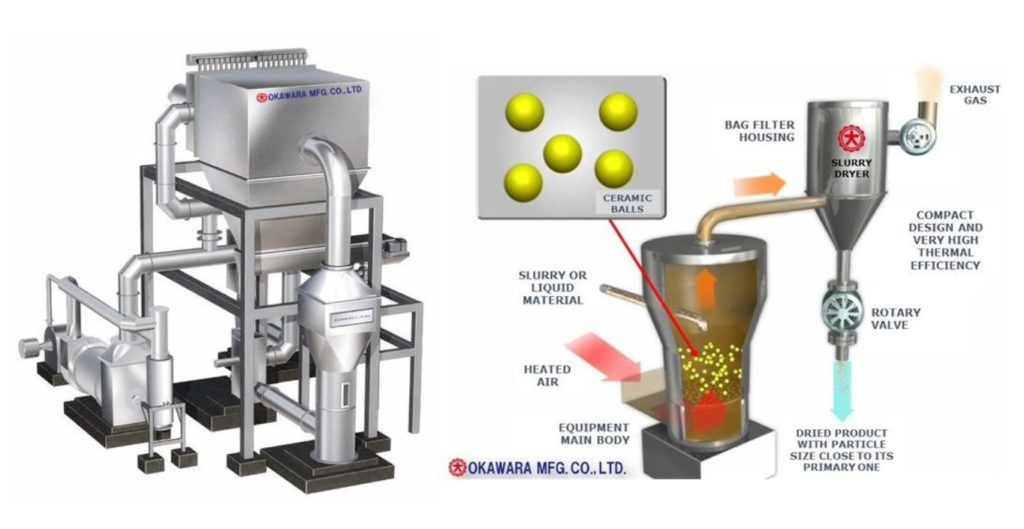
Courtesy of POWTECH & Okawara MFG. Co., Ltd.
Step #7: Glazing
Referring back to traditional ceramic processing, this step is added to the process prior to firing. Typically, the glaze consists of oxides that give the product the desired finish look. The raw materials are ground in a ball mill or attrition mill. We have provided customers with vibratory screeners that screened the glaze in order to give the mixture a uniform consistency that, when applied to the ceramic, would be smooth and even. The glaze can be applied using spraying or dipping methods.
Step #8: Firing
Also known as sintering or densification, the ceramics pass through a controlled heat process where the oxides are consolidated into a dense, cohesive body made up of uniform grain. Some general points to remember about different types of firing end products:
- Short Firing Time gives you a final product that is porous and low density.
- Short – Intermediate Firing Time results in fine-grained, high-strength products.
- Long Firing Time produces a coarse-grained product that is creep resistant. This means the material will not distort when under a load for an extended period of time.
Phew! And with that, we have touched on every step of the traditional ceramics process. The Ceramics Industry is too large to cover in one blog, so I suppose tackling the technical ceramics process at a later date may be an idea. So stay tuned! Do you have a Ceramics Processing Application that may require vibration? We are happy to help. Contact a Sales Team Member today!
Until next time Movers & Shakers, #ShakeOn!
Follow us:
Share this blog post:


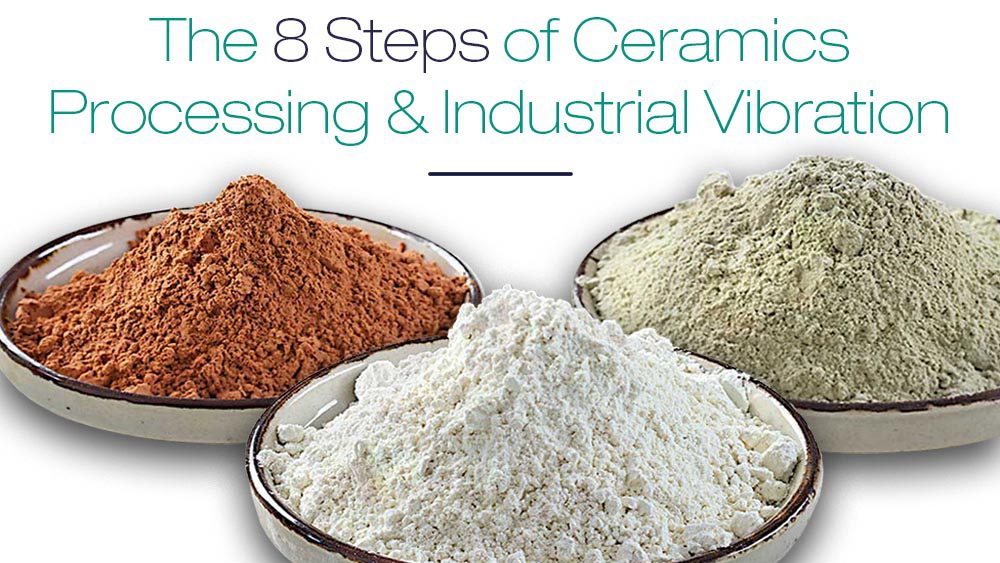
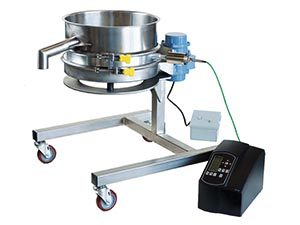
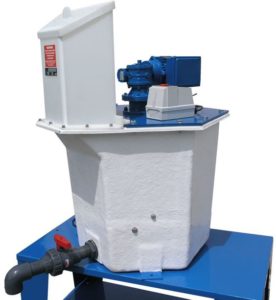
2 Responses to The 8 Steps of Ceramics Processing and Industrial Vibration